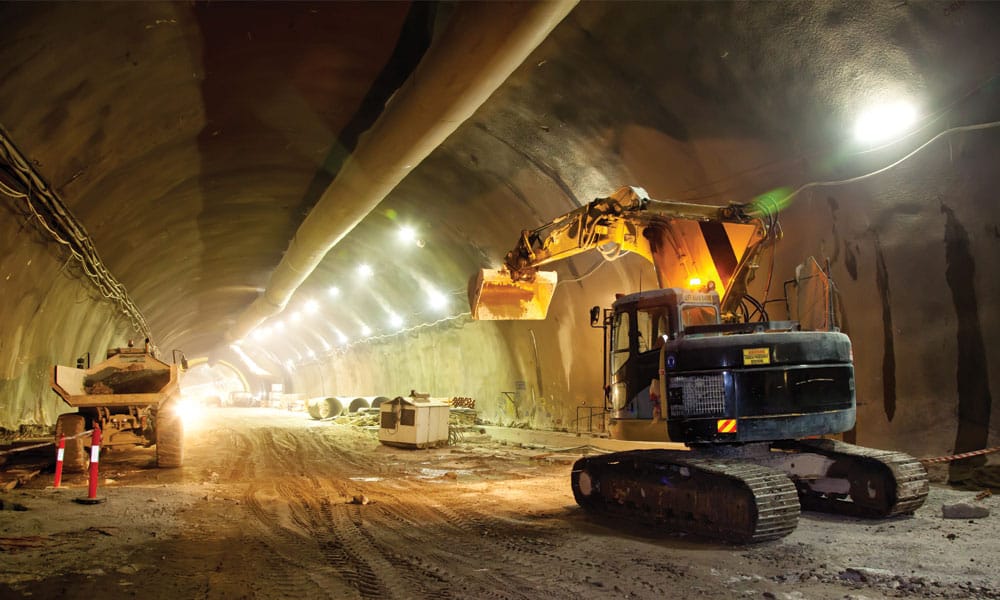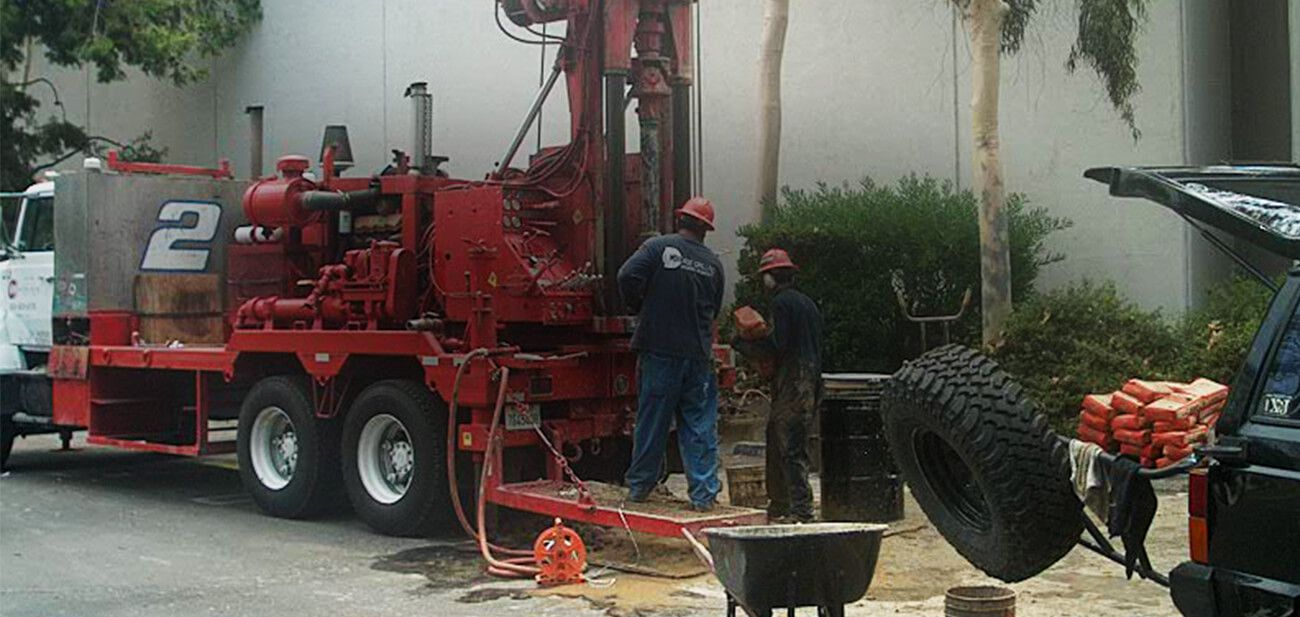The Future of Geotechnical Engineering: Just How Geotheta is Shaping Sector Criteria
The Future of Geotechnical Engineering: Just How Geotheta is Shaping Sector Criteria
Blog Article
Diving Into Geotechnical Services: the Vital Function of Soil Analysis, Earthquake Threat Assessment, and Geosynthetics in Building Sustainable and Safe Frameworks
In the world of constructing risk-free and lasting structures, the foundation laid by geotechnical services plays a vital duty. Dirt evaluation, earthquake risk assessment, and the application of geosynthetics are crucial parts that ensure the integrity and longevity of buildings. By understanding the make-up of the soil, forecasting seismic threats, and integrating ingenious materials, designers can alleviate dangers and boost the resilience of infrastructure. The correlation between geotechnical services and the safety of buildings is elaborate, shaping not only the structural stability but also the environmental influence of our constructed setting. The harmony in between these aspects develops the backbone of a conversation that explores the intricate web of variables that add to the production of lasting and protected piles.

Value of Dirt Analysis
Understanding the value of dirt analysis is important in making certain the structural stability and security of any kind of construction project. Soil evaluation gives essential info regarding the dirt make-up, toughness, and potential risks that may affect the foundation of a framework. By performing detailed dirt evaluation, engineers can figure out the ideal foundation design, construction approaches, and needed preventative measures to alleviate any kind of potential dangers.
One of the main reasons dirt analysis is important is its function in recognizing dirt residential properties that might impact the security of a structure. Variables such as soil bearing capacity, settlement characteristics, and water content can considerably influence the structural efficiency of a building and construction job. Without appropriate soil analysis, the structure might be at risk of settling erratically, causing architectural damage and even collapse over time.
In addition, dirt analysis aids in analyzing the threat of natural disasters such as quakes, landslides, or floods. By comprehending the soil's actions under different conditions, designers can execute suitable procedures to enhance the strength of the structure and ensure the safety and security of residents. geotheta. In verdict, dirt analysis is an essential action in the building process that should never ever be neglected
Assessing Quake Risks
Offered the vital role of dirt analysis in figuring out structural stability, it is vital to additionally evaluate quake risks when preparation and constructing buildings and framework. Earthquake danger evaluation entails assessing the possible seismic hazards that a site might face based on its place and geological characteristics. This process aids programmers and designers understand the level of threat posed by earthquakes and help in making structures that can endure such occasions.
Assessing earthquake dangers normally involves studying historic seismic task in the area, establishing the site's distance to geological fault, and assessing the dirt composition to predict exactly how the ground will certainly react to seismic waves. By performing an extensive earthquake risk assessment, engineers can execute proper reduction procedures, such as including seismic-resistant layout attributes right into structures, to boost their strength versus quakes.

Function of Geosynthetics
Geosynthetics play an essential function in boosting the efficiency and durability of civil engineering frameworks. These artificial materials, such as geogrids, geotextiles, and geomembranes, provide a vast array of features that contribute to the total stability and long life of various construction tasks. One key aspect of geosynthetics is their support capability, where they can improve the strength of dirts, giving boosted assistance for roads, embankments, and retaining walls. By look at more info dispersing loads more effectively and lowering settlement, geosynthetics help prevent architectural failures and keep the honesty of the developed setting.
Furthermore, geosynthetics act as barriers, supplying defense versus water navigate to this website seepage, chemicals, and various other unsafe compounds that could compromise the structural honesty of a task. They are also made use of in drainage applications to facilitate the effective flow of water, protecting against saturation and erosion of soil. Along with their technological features, geosynthetics are valued for their sustainability, as they can decrease the requirement for natural deposits and reduced building costs. Overall, the calculated consolidation of geosynthetics is vital for guaranteeing the resilience and safety and security of modern framework jobs.
Building Lasting Structures
The execution of environmentally mindful practices in building is crucial for promoting the growth of sustainable frameworks. Structure lasting frameworks includes making use of materials and style strategies that minimize environmental influence, reduce energy intake, and advertise long-term durability. Including sustainable methods such as making use of recycled materials, optimizing energy performance, and implementing eco-friendly structure qualifications like LEED can considerably improve the ecological efficiency of a framework.
One key aspect of building lasting structures is the effective usage of resources. This includes making buildings that take full advantage of all-natural light, air flow, and insulation to reduce the dependence on man-made lights, heating, and cooling systems. In addition, incorporating eco-friendly energy resources such as solar panels or wind generators can better reduce the carbon impact of a structure while additionally possibly decreasing lasting energy costs.
Moreover, lasting structures usually prioritize water preservation by integrating features like rain harvesting systems, low-flow fixtures, and drought-resistant landscape design. By adopting these eco-friendly techniques, construction projects can not only decrease their ecological impact however also add to producing healthier and a lot more resistant constructed atmospheres for future generations.
Ensuring Safety in Building And Construction
In the realm of sustainable construction techniques, a fundamental top priority is making sure the safety of all personnel associated with the building procedure. Safety in construction includes different facets, consisting of making use of appropriate individual protective devices (PPE), adherence to safety and security methods, routine training on danger recognition and reduction, and the application of emergency situation action plans. Building and construction websites are naturally high-risk atmospheres, with prospective risks varying from falls and falling things to electric crashes and structural collapses (geotheta). Consequently, it is vital for building and construction business to prioritize precaution to stop injuries and accidents.

Verdict
Finally, soil evaluation, earthquake danger analysis, and making use of geosynthetics play vital duties in guaranteeing the sustainability and security of frameworks. By recognizing the homes of dirt, reviewing earthquake risks, and utilizing geosynthetics for reinforcement, designers can construct frameworks that are both resilient and resilient. It is necessary for construction professionals to prioritize these geotechnical services to create sustainable and safe buildings for the future.
Soil evaluation, quake risk analysis, and the implementation of geosynthetics are crucial components that make sure the stability and longevity of buildings. Dirt analysis offers vital info concerning the soil make-up, toughness, and possible threats that might impact the foundation of a structure.One of the primary factors dirt evaluation is crucial is its function in identifying soil residential or commercial properties that could influence the security of a structure.In final thought, soil evaluation, quake danger assessment, and the usage of geosynthetics play critical functions in guaranteeing the sustainability and safety of frameworks. By recognizing the residential properties of soil, evaluating quake dangers, and utilizing geosynthetics for support, engineers can build frameworks that are both resistant and long lasting.
Report this page